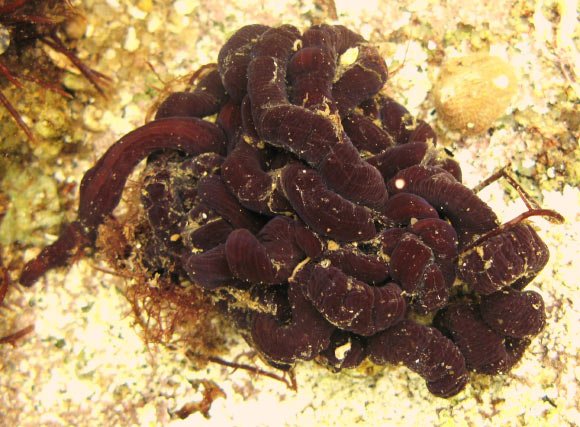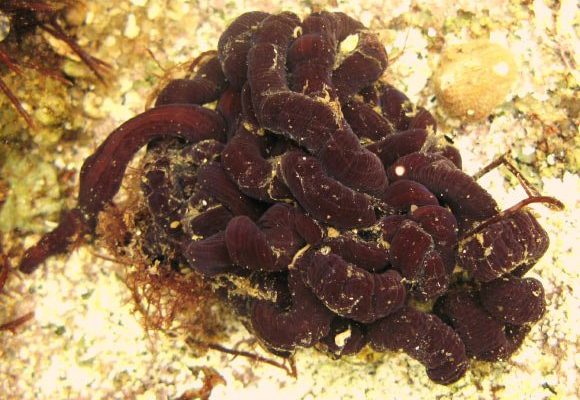
Often, when thinking about worms, you might picture small, earth-dwelling creatures wriggling through soil. Bootlace worms, however, take this concept to a whole new level. They can reach lengths of over 30 meters (nearly 100 feet!), making them one of the longest worms in the world! Found primarily in coastal waters, particularly around Europe, these worms are intriguing both to researchers and beachgoers alike. Hang tight; we’re about to unravel the mysteries of identifying Bootlace worms and what makes them so special.
What Are Bootlace Worms?
Bootlace worms belong to the genus *Lineus*, which is part of the phylum Nemertea, commonly known as ribbon worms. These worms are unique in their appearance and behavior, making them stand out in the bustling ecosystem of intertidal zones. They have a flattened, elongated body that often resembles a bootlace—hence the name. If you were to see one in its natural habitat, you might notice its vibrant colors, ranging from shades of brown to bright yellows and greens.
One key feature of Bootlace worms is their **proboscis**, a specialized feeding organ they can extend to capture prey. This organ is not just for show; it plays a crucial role in their hunting strategy. These worms often feed on small marine animals like crustaceans and other soft-bodied organisms. Isn’t it amazing to think how something that looks so ordinary can have such an extraordinary method of feeding?
Inhabiting *intertidal zones*, Bootlace worms often find refuge in sandy or muddy substrates. They can sometimes be buried beneath the sand, so spotting them might require a keen eye. Understanding where they thrive will help you in your quest to identify these unique creatures.
Physical Characteristics of Bootlace Worms
When trying to identify Bootlace worms in the wild, it helps to know what they look like. While they can vary in color, their most notable feature is their **length**. They can stretch out impressively long, making it easy to mistake them for seaweed or other debris. If you see a long, slender form moving gently with the tide, it’s worth taking a closer look.
Their bodies are also quite **flexible**, allowing them to navigate through different substrates easily. This adaptability is key to their survival in the intertidal zone. You might even catch one wriggling through the sand or curling up as it responds to movement or changes in water pressure.
Another interesting aspect is their **coloration**. While they often display earthy tones, their vibrant colors can change based on their surroundings or even their diet. It’s like they have their own built-in camouflage system! So, the next time you’re at the beach, keep an eye out for those impressive hues.
Where to Find Bootlace Worms
Bootlace worms can typically be found in the **intertidal zone**, the area that lies between high and low tide marks. This dynamic environment is rich in biodiversity, making it an ideal home for many marine organisms, including Bootlace worms. When the tide goes out, these worms often burrow into the sand or mud, so timing your beach visits could help with your quest for sightings.
Look for them in sandy or muddy areas where they can easily hide. If you dig a little into the substrate, you might discover them curled up below the surface. Sometimes, they can even be seen swimming in the water at lower tides, making them a fascinating find.
One effective way to spot Bootlace worms is to check around tidal pools or the edges of rocks where sand and water meet. Their natural habitat supports a wide variety of life, so keep your eyes peeled for their distinctive shapes.
Behavior and Diet of Bootlace Worms
Bootlace worms are primarily **carnivorous**. They feed on small marine creatures like crustaceans and other soft-bodied animals. Their proboscis acts like a long tube, allowing them to capture prey by extending it out and quickly ensnaring the unfortunate victim. It’s a bit like a magician’s trick, watching them catch their meal!
You might be wondering what happens after they catch their prey. Once they’ve captured their food, they use their sharp, **digestive enzymes** to break down the meal before absorbing the nutrients. This digestive method is efficient and allows them to thrive in their challenging environment, giving them a competitive edge among other marine animals.
In terms of behavior, Bootlace worms are often solitary creatures. However, during mating season, they might be spotted together. It’s a spectacular sight, as they can twist and turn around each other in an elaborate dance of courtship. This unique mating behavior adds another layer of intrigue to these astonishing worms.
Why Bootlace Worms Matter
Understanding Bootlace worms goes beyond just identifying them on the beach; it’s about appreciating their role in the ecosystem. They are essential predators in their habitat, helping to maintain the balance among marine life. By controlling populations of small marine organisms, they contribute to the overall health of intertidal zones.
Moreover, Bootlace worms serve as vital indicators of environmental health. Because they are sensitive to changes in their surroundings, scientists often study them to assess the impact of pollution and climate change on marine ecosystems. Their presence can tell us a lot about water quality and ecosystem stability.
So, next time you’re enjoying a day at the beach, think about the Bootlace worms and their role in the marine world. They may appear simple at first glance, but they play a key part in the complex web of life under the waves.
Common Misidentifications
Sometimes, Bootlace worms can be mistaken for other marine organisms, which can lead to confusion. For example, many people might confuse them with **sea cucumbers** or strands of **seaweed** due to their elongated shapes. To differentiate them, pay attention to the slight movements of the worm. Bootlace worms are often more active than sea cucumbers, which tend to stay still.
Another common mix-up occurs with **flatworms**, especially since they also have elongated bodies. However, flatworms are generally broader and have a more jelly-like texture than the firm, flexible bodies of Bootlace worms. If you observe closely, the movement patterns can also help you distinguish between the two.
Understanding the differences in texture, movement, and habitat can greatly enhance your ability to identify Bootlace worms correctly. It’s not just about spotting a long, squiggly form; it’s about appreciating the unique characteristics that make them special in the marine ecosystem.
Final Thoughts on Identifying Bootlace Worms
Bootlace worms are truly captivating creatures that reflect the richness of life in intertidal zones. From their impressive lengths to their fascinating feeding habits, these worms offer a glimpse into the complexity of marine ecosystems. Whether you’re a seasoned marine enthusiast or just enjoying a sunny day at the beach, knowing how to identify Bootlace worms can deepen your appreciation for the world around you.
So, the next time you’re by the shore, take a moment to look closely at the sand and water. Beneath the surface lies an entire world waiting to be explored. With a little curiosity and some knowledge, you may just spot one of these extraordinary Bootlace worms in action. And who knows, they might just inspire your next beach adventure or spark a lifelong fascination with marine life!

